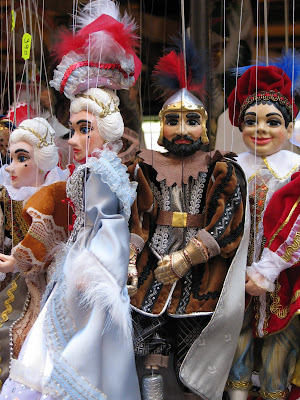
From Munich, my mom and I took a six-hour train to Prague, a ride through the rolling countryside of Germany and the Czech Republic. My mom and I spent three days in this eastern European city, my first time in Eastern Europe.
Day One: Arrived and checked into the hostel. Went out for Thai, walked Wenceslas Square, and hit the hay.



Day Two: Went to Old Town and saw the famous Town Hall with the animated astrological clock. Huge crowds surrounded it on every hour with cameras in hand. That was more of a spectacle than the clock. We saw St. Nicholas’ Church, and learned a lot about the history of the Old Town square. During the Velvet Revolution (in the 1960s?), crowds gathered in a nonviolent demonstration jiggling their keys in protest of the communist regime and were successful. The next morning the work for a democratic nation began.
Then we walked to the nearby Jewish quarter, once a Jewish ghetto. There we saw the oldest synagogue in Europe which was built in the 1200s and called the Old New Synagogue, as well as a mass grave site. Since the Jews were given limited land in their ghetto, they built graves on top of one another, bringing new earth in, in an attempt to bury the dead in as respectful a manner as possible. Over the years, as the earth settled, the grave stones, so closely spaced, fell and leaned on one another.






Next, we visited the Mucha museum, Czech-born Art Nouveau painter of the early 1900s. You’ve seen his stuff on calendars and cards all over the U.S. What amazes me with painters like Mucha, and even Dali to an extent, is that before painting their cartoon-like depictions that seem simple, or in Dali’s case warped, these artists went through a realistic stage where they could paint like a photograph. Then they discovered their calling, their own unique style, and left behind the verisimilitude. But you can still see this amazing ability in their painting. With Mucha, just a few simple lines around the eyes and mouths of the women he painted created a different kind of life and realism. (If I hadn’t chased this writing thing in college, the major that got away, the one I left behind, was definitely Visual Art!)

That evening, my mom and I enjoyed a Vivaldi/Mozart/Dvorak concert on the steps of the National Museum.






Can't get enough of Prague at night.


Day Three: We walked to Prague Castle via the famous Charles Bridge, hosting statues of various saints connected to the city. We spent the whole day in the castle compound touring the St. Vitas Cathedral, the Basilica of St. George, the Golden Way where merchants sold their crafts, and the dungeon where inmates received their medieval torture.










Day Four: We visited the open air market in Old Town. Marionettes galore!



Then toured the Museum of Decorative Arts (glass, textiles, books, clocks, photos). Finally, St. Henry’s Clocktower for our final views of the city and an ear-shattering bell melody on the hour.

Hopped a 5pm train back to Munich. By far the better trip. Sunset on the country. Cool air blowing in the window. A car to ourselves. Time to spread out and write to the rhythm and sounds of the moving train.



















































